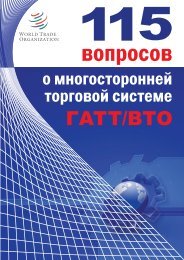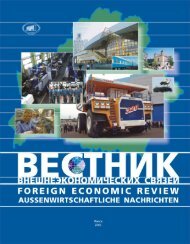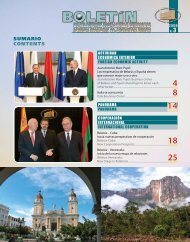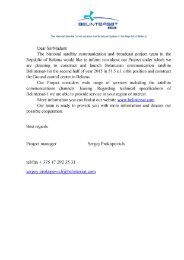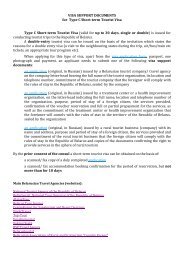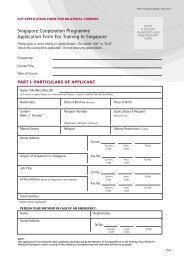Human Development Report 2013 - UNDP
Human Development Report 2013 - UNDP
Human Development Report 2013 - UNDP
You also want an ePaper? Increase the reach of your titles
YUMPU automatically turns print PDFs into web optimized ePapers that Google loves.
concerns will make for a complex environmentwith attendant risks, including progress reversals,rising insecurity and greater inequality.Forecasting is difficult in such a complexenvironment because modelling may miss keyvariables, such as technological progress, thatcan dramatically change both production andpersonal possibilities. Nevertheless, modellingscenarios are helpful for illustrating policychoices and their implications.Enhancing equityGreater equity, including between men andwomen and across groups (religious, racial andothers), is not only valuable in itself, but alsoessential for promoting human development.One of the most powerful instruments foradvancing equity and human development iseducation, which builds people’s capacities andexpands their freedom of choice. Educationboosts people’s self-confidence and makes iteasier for them to find better jobs, engage inpublic debate and make demands on governmentfor health care, social security and otherentitlements.Education also has striking benefits forhealth and mortality (see box 4.1 on differencesin education futures in the Republic of Koreaand India). Evidence worldwide establishes thatBOX 4.1Why population prospects will likely differ in the Republic of Korea and IndiaEducational attainment has risen rapidly in the Republic of Korea. In the1950s a large proportion of school-age children received no formal education.Today, young Korean women are among the best educated women inthe world: more than half have completed college. As a consequence, elderlyKoreans of the future will be much better educated than elderly Koreansof today (see figure), and because of the positive correlation between educationand health, they are also likely to be healthier.Assuming that enrolment rates (which are high) remain constant, theproportion of the population younger than age 14 will drop from 16% in 2010to 13% in 2050. There will also be a marked shift in the population’s educationcomposition, with the proportion having a tertiary education projectedto rise from 26% to 47%.For India, the picture looks very different. Before 2000, more than half theadult population had no formal education. Despite the recent expansion in basicschooling and impressive growth in the number of better educated Indians(undoubtedly a key factor in India’s recent economic growth), the proportionof the adult population with no education will decline only slowly. Partly becauseof this lower level of education, particularly among women, India’spopulation is projected to grow rapidly, with India surpassing China as themost populous country. Even under an optimistic fast track scenario, whichassumes education expansion similar to Korea’s, India’s education distributionin 2050 will still be highly unequal, with a sizeable group of uneducated(mostly elderly) adults. The rapid expansion in tertiary education under thisscenario, however, will build a very well educated young adult labour force.Comparative population and education futures in the Republic of Korea and IndiaPopulation (millions)50Republic of Korea, constant enrolment ratiosPopulation (millions)2,000India, fast track scenario40TERTIARYTERTIARY1,500TERTIARY30SECONDARYSECONDARY1,000SECONDARY2010PRIMARYNO EDUCATIONPRIMARY500NO EDUCATIONPRIMARY0197019801990200020102020 20302040 20500197019801990200020102020 20302040 2050Source: Lutz and KC <strong>2013</strong>.88 | HUMAN DEVELOPMENT REPORT <strong>2013</strong>




